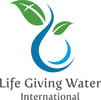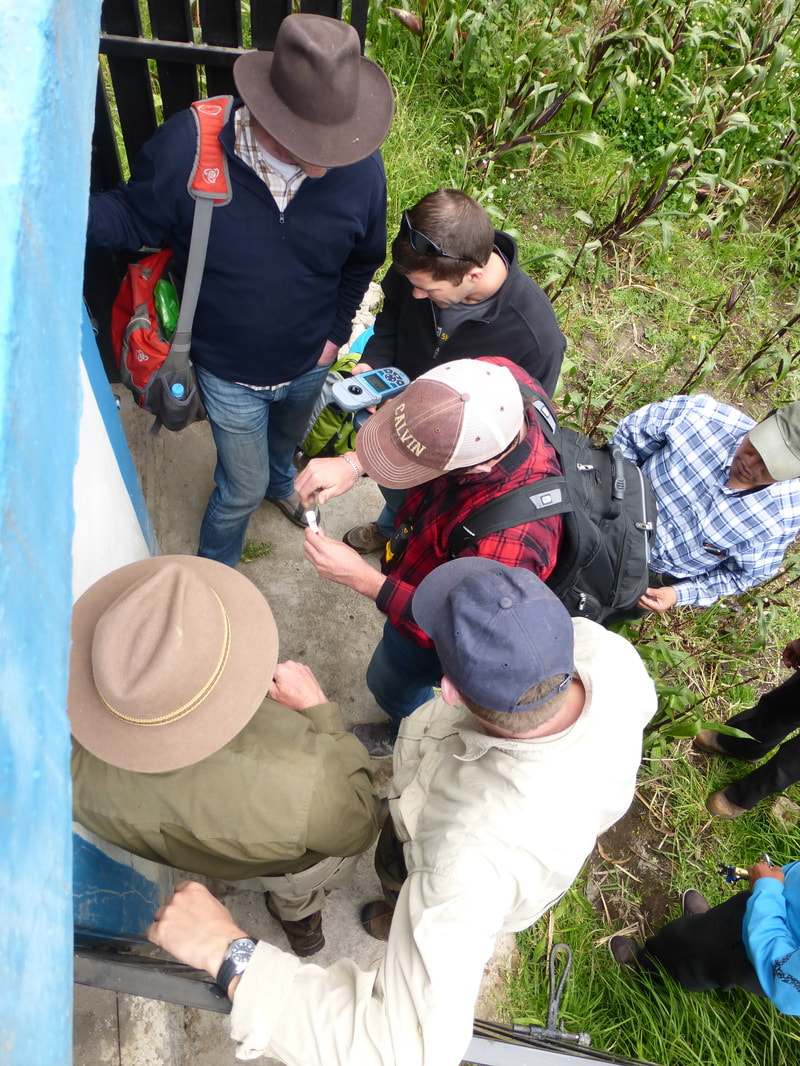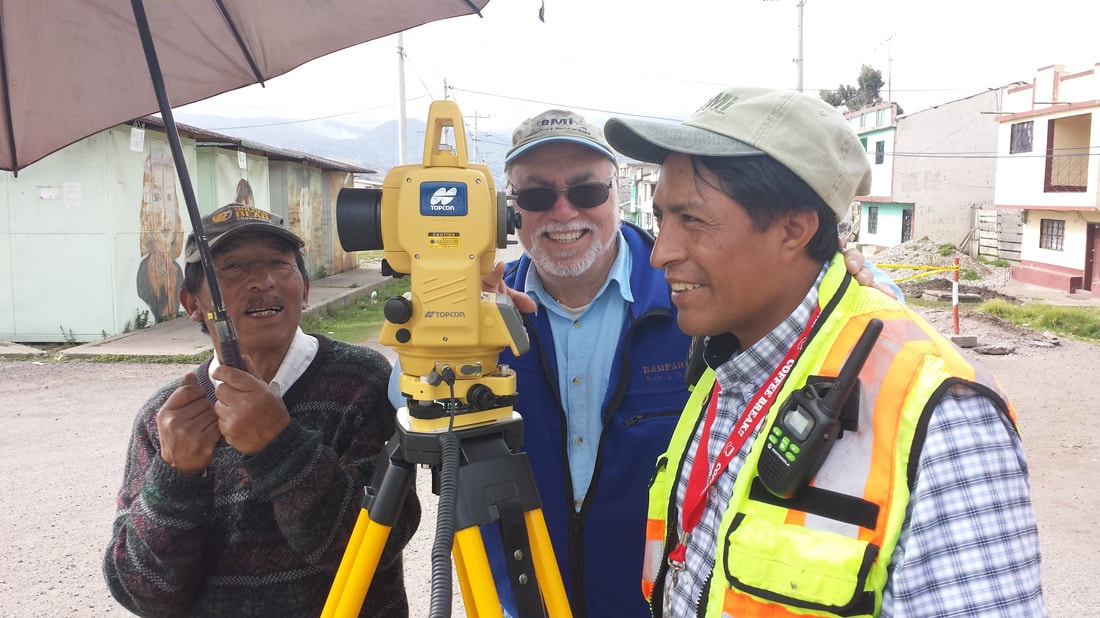|
In August, a ministry team from R-Athletics in Grand Rapids, Michigan, encouraged the people in Galtes. We worked mornings on the water system with the community in the bitter cold and held Vacation Bible school in the afternoons. The children loved the handicrafts, songs, and activities. Below is a video of some of their trip.
1 Comment
Victoria, a Mechanical Engineer writes:
Life Giving Water Int’l interns spent an overnight in Mindo, Ecuador, located in the cloud forest of northern Ecuador. The town is known for tourism, outdoor attractions, chocolate factories, and especially their wildlife. During our visit, we were so blessed to experience many of these things. One highlight was our tour of a chocolate factory where we learned about the process of making chocolate - from tree to chocolate bar! Our guide, Carlos, informed us that the Fine Aroma cocoa tree is native to Ecuador. It produces high quality cocoa and can live to around 100 years; while engineered versions of this plant produce cheaper cocoa and live only 20-30 years. To produce cocoa pods, the Fine Aroma cocoa tree must mature for five years. On the fifth year, it will produce buds, some of which will grow into cocoa pods that take several months to mature. Once the pods are harvested, they are cut open, and a milky white pulp, with a sweet, citrusy flavor, and the seeds are harvested from inside. These are fermented in wooden crates for a total of four days. From there, the pulp is used for a syrup product, and the seeds are dried in open air for 20 days. Once the cocoa seeds are dried and brown in color, they are roasted and de-shelled, producing cocoa nibs. The shells are used to make delicious cocoa tea. After this day of processing, the cocoa nibs are processed for three more days, as they are ground into a paste, and compressed to remove 95% of the fat, resulting in cocoa powder! Finally, to produce the final chocolate bars, sugar is added and the chocolate is tempered. Overall, it takes about a month to produce chocolate from pod to chocolate bar! We sampled the tea, chocolate paste, and chocolate, and it was incredible! (If I suddenly had to move to Mindo, I would definitely work there.) Besides the amazing chocolate in Mindo, we saw some truly breathtaking natural beauty. We visited a ¨mariposaria¨, or butterfly farm! There, thousands of butterflies, native to Ecuador, from giant, vibrant blue ones, to tiny red, yellow, and transparent-winged butterflies surrounded us. With a bit of their food on our hands, butterflies would land on us. We also visited a hummingbird garden! The man who owned the property spent twenty years developing the garden with plants and feeders. One could see his joy of sharing the birds, with others. We saw possibly eight species - feisty orange and green birds, vibrant green ones, and breath-taking turquoise and white ones. In that region alone, there are about 30 species of hummingbirds, while in Ecuador overall, there are about 100! It was incredible observing their colors, their rapid movement, and watching them at rest. To top off the trip, we had a zip line expedition! The course was set up on the mountainside crossing large valleys (up to 400m wide! )with beautiful views. We had fun facing our fears, talking with our guides, and riding upside down (ahhh!) or doing the ¨superman¨. Overall, it was a beautiful trip , experiencing creation in another part of Ecuador. It was also wonderful connecting with people there - our very kind hotel host, whom we learned is a Christian; our tour guides, and a spunky restaurant owner who knows Cincinnati and Culver City! It was an amazing trip, and I am so grateful. And now, I will be enjoying some chocolate tea at home, too. Mechanical Engineer intern, Emma Yunker writes: Saludos con todos! Me llamo Emma Yunker. I am a mechanical engineering student at Calvin College and am interning this summer in Ecuador for six weeks with Life Giving Water International. However, for the first two weeks of my stay, I accompanied The Clean Water Institute of Calvin College which collaborates with Life Giving Water International. Dr. David Wunder, the director of the Clean Water Institute of Calvin College states, “It’s relatively easy to find water and treat water, the hard part is to maintain water treatment and make it sustainable.” Once the team arrived in Quito, we ventured out to Ocpote La Merced, where we stayed for four days with minimal running water and electricity in an old hacienda house. The lack of Wi-Fi created more opportunity for wonderful conversations both within the team and also with the local people. Spending the cold nights on mattresses, curled up in our sleeping bags challenged us, however, learning and living in the community was priceless. Not only were friendships made, but I must admit, an enemy was also made. The rooster outside the old hacienda: we did not agree upon sleeping hours. Our work in ten different communities primarily consisted of three studies:
It is important to understand that The Clean Water Institute of Calvin College promotes sustainability. The intent of our work focused around learning from the local communities about their water systems. We felt honored to live in a community, while working alongside several indigenous communities to improve their water quality. The Calvin Clean Water Institute Team: Titration of the communities water, testing for Chloride and C02:
Actually, the community may be too busy to celebrate. They are in the final stages of building a community water system to bring clean spring water to each home. Two springs have been protected collecting the water below the ground surface and covered with concrete to prevent contamination. The springs provide 150 gallons per minute of clean naturally filtered ground water.
Four reservoirs and two pressure breaking tanks have been built. They are currently digging 5.4 miles of four-foot deep trench for the pipe distribution system supplying water to 95 homes. Kawsaypak Yaku, a Kichwa mission organization, provides the design, technical supervision, and about half of the materials with support from Life Giving Water International and an evangelical German mission, DMG. In addition to the community support, the local Ecuadorian municipality is providing the remaining materials. We are grateful to have a part in this significant project. What a wonderful way to celebrate World Water Day! Engineering intern, Peter Wagenmaker, writes: You don't know me. Probably. I am a civil engineering student at Calvin College here in Ecuador with Life Giving Water Int'l for 10 weeks. Over the first two weeks, a group of ten from the Clean Water Institute of Calvin College visited numerous communities with Bruce. Our four nights in the village of Castug were cold. We slept in sleeping bags on mattresses set upon a concrete floor. This floor supported rather thin walls which had fully surrendered to the subzero temperature outside. But each morning we were welcomed warmly with wide smiles. At each meal, the Quichua community fed us more than most of us could eat in one sitting - even I barely pulled out with victories! Not limited to quantity, they served us meat, often cuy (guinea pig), at every meal! These accommodations were part of their payment for the two chlorine pumps we brought them to install. The first morning in Castug we tested the water quality and chlorine content at their well. As noon rolled around, we had been severely shown up by the Castug-dwellers' superior trench-digging abilities. The community did the real work to install both the primary and backup chlorine pumps. Still, they were clearly quite encouraged by our interest in their access to potable water, for which they have worked hard for decades. Much of the rest of the trip was similarly set up; we visited numerous other communities and tested their water to get an idea of how well the disinfection methods are working and what adjustments may be needed. We also came to appreciate the difficulties and resources available to communities who pursue clean water here. Five of the other seven students are now conducting further trip-related research back at Calvin for the rest of the summer. The completed disinfection study will be informed by approaches from engineering, chemistry, psychology, and international development. The next two weeks I studied Spanish in downtown Quito and stayed with an Ecuadorian family a lovely two hour walk away (I only did this once and usually took a bus). Starting this week, I will continue to monitor some of the sites to better pinpoint potential corrections, provide data to Calvin's study, and exercise flexibility as other opportunities come up.
Earlier this year, I was fortunate to join Cherith, Bruce, and their team on a visit to the Indigenous community of Achullay in the province of Chimborazo. The community celebrated the inauguration of a water system recently completed by Life Giving Water Int'l. The timing of the trip was truly part of God’s plan for my life as the spiritual encouragement of the team and community came at a challenging part of my walk with Christ.
It is amazing to see how access to running water impacts the lives of the people in the community forever, and how grateful they are to Cherith and Bruce. The people were unbelievably generous, especially since I was not part of the project in Achullay, and yet they included me in their festivities and fed me so much food! More importantly Life Giving Water Int'l's ministry bore fruit in the lives of all who were involved. The power of coming along side a community to assist the capability that already exists is what I think makes this organization unique and effective on a developmental and spiritual level. I feel so blessed to have been given the opportunity to see how God has used Life Giving Water Int'l and I am excited how God will use it in the future. The vision of providing clean water 24/7 to more than 90 homes in Achullay was finally realized this week, when the second pump was installed, reservoir filled, and water began flowing. The pipe promised from government a number of years ago, was finally delivered a number of months ago, allowing the last parts of the project to be completed. Previously, the community hauled water for domestic use up a steep mountain slope with a 300 foot vertical climb. We are grateful to the LORD for His provision.
Bob and Patrick, Engineering Ministries International staff, provided two weeks of training for both expatriate and Ecuadorian staff members in Riobamba, Ecuador. Skills were practiced in the nearby community of Santiago de Quito. The community housed and fed us while also helping to execute the topographic survey of their community to be used for the design of their water system. LGWI and Kawsaypak Yaku (life giving water in Kichwa) sponsored the workshop to hone their skills in serving needy communities.
Twelve years ago, we worked on the Pueblo Viejo community water system serving about 150 families. That water system continues to faithful serve that community to this day. The Pueblo Viejo water system caretaker now has responsibility to protect the water sources for Alausi, the nearby county seat. As a result of his recommendation, the Alausi mayor invitied CODEINSE, our Ecuadorian ministry partner to help that large town with thousands of families improve their water system.
|















 RSS Feed
RSS Feed
